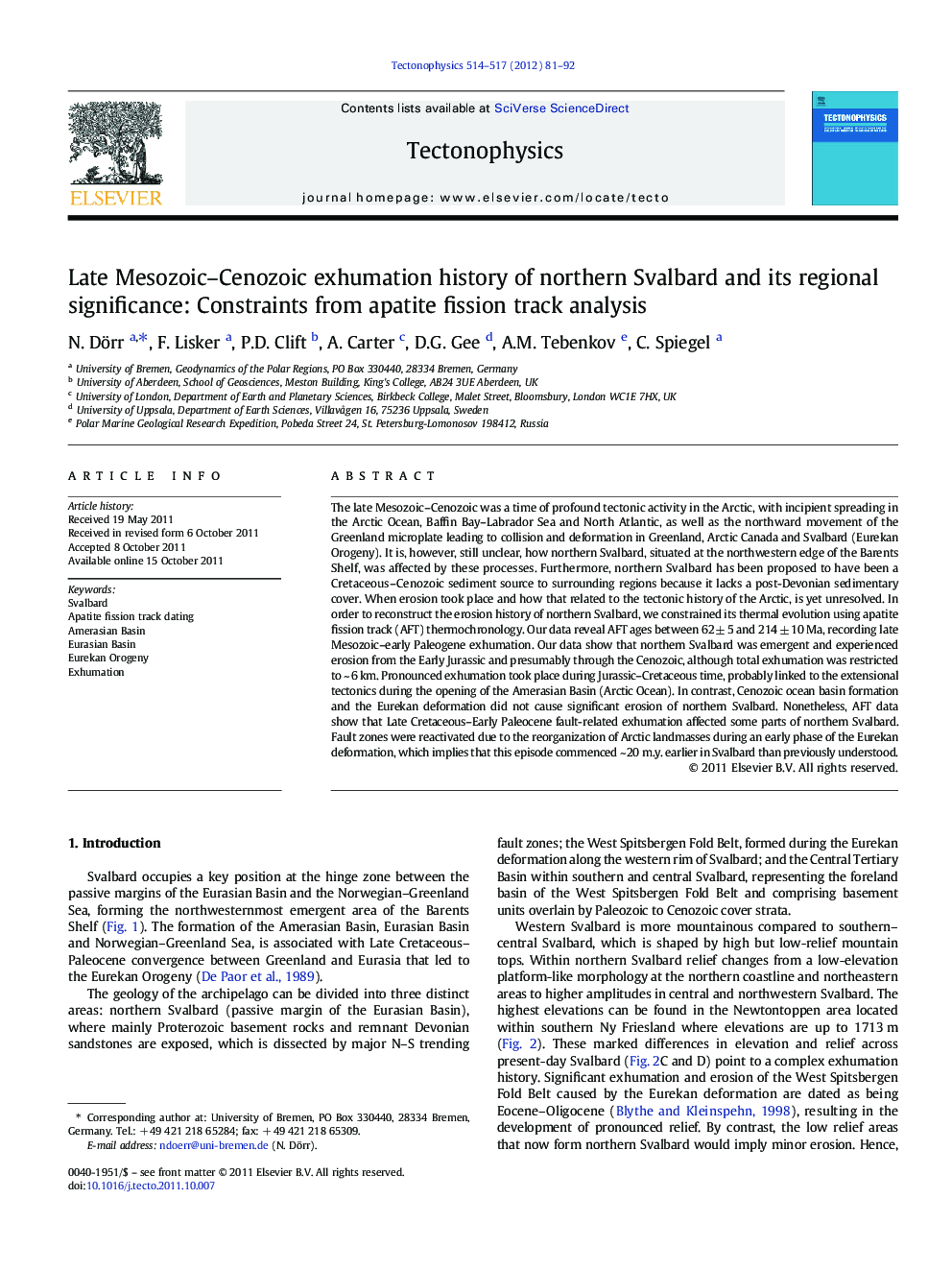| کد مقاله | کد نشریه | سال انتشار | مقاله انگلیسی | نسخه تمام متن |
|---|---|---|---|---|
| 4692959 | 1636832 | 2012 | 12 صفحه PDF | دانلود رایگان |

The late Mesozoic–Cenozoic was a time of profound tectonic activity in the Arctic, with incipient spreading in the Arctic Ocean, Baffin Bay–Labrador Sea and North Atlantic, as well as the northward movement of the Greenland microplate leading to collision and deformation in Greenland, Arctic Canada and Svalbard (Eurekan Orogeny). It is, however, still unclear, how northern Svalbard, situated at the northwestern edge of the Barents Shelf, was affected by these processes. Furthermore, northern Svalbard has been proposed to have been a Cretaceous–Cenozoic sediment source to surrounding regions because it lacks a post-Devonian sedimentary cover. When erosion took place and how that related to the tectonic history of the Arctic, is yet unresolved. In order to reconstruct the erosion history of northern Svalbard, we constrained its thermal evolution using apatite fission track (AFT) thermochronology. Our data reveal AFT ages between 62 ± 5 and 214 ± 10 Ma, recording late Mesozoic–early Paleogene exhumation. Our data show that northern Svalbard was emergent and experienced erosion from the Early Jurassic and presumably through the Cenozoic, although total exhumation was restricted to ~ 6 km. Pronounced exhumation took place during Jurassic–Cretaceous time, probably linked to the extensional tectonics during the opening of the Amerasian Basin (Arctic Ocean). In contrast, Cenozoic ocean basin formation and the Eurekan deformation did not cause significant erosion of northern Svalbard. Nonetheless, AFT data show that Late Cretaceous–Early Paleocene fault-related exhumation affected some parts of northern Svalbard. Fault zones were reactivated due to the reorganization of Arctic landmasses during an early phase of the Eurekan deformation, which implies that this episode commenced ~ 20 m.y. earlier in Svalbard than previously understood.
► We resolve the exhumation history of northern Svalbard by applying apatite fission track thermochronology.
► Jurassic–Cretaceous exhumation of northern Svalbard is related to passive margin evolution during the formation of the Amerasian Basin.
► Faulting due to an early phase of the Eurekan Orogeny caused Cretaceous–Early Paleocene exhumation in parts of northern Svalbard.
► Northern Svalbard was emergent and underwent erosion from the Early Jurassic and presumably through the Cenozoic resulting in modest exhumation.
► No thermal signal of the Eurekan Orogeny and the Cenozoic basin formations is detectable in northern Svalbard.
Journal: Tectonophysics - Volumes 514–517, 5 January 2012, Pages 81–92